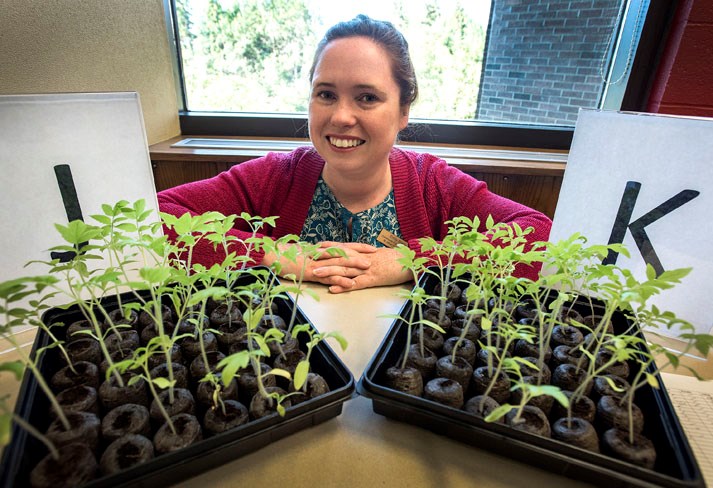In space, no one can hear you scream about how much you love tomatoes. It’s a good thing then that you can grow space tomatoes right here on Earth.
As part of its space-themed summer reading programs this year, the St. Albert Public Library has a special little garden upstairs that people can observe and report back on.
“We were looking on the Canadian Space Agency’s website for ideas for activities. One of the things they do is the Tomatosphere project,” said Emily Brady, community outreach librarian.
“They send you a pack of seeds that have been exposed to space conditions and a pack of seeds that are a control set. The idea is that you grow them both and the participants can predict what they think will be the differences between the tomatoes.”
The idea behind the project is not to expect another Little Shop of Horrors-type plant on the rampage. Instead, they want to get people thinking about long-term space travel and the extreme and unique challenges that might be faced by the astronauts.
The tomatoes mark a turn on the teen summer reading game where the players have to consider their science training and formally register their predictions. All of the predictions will be displayed on the windows of the second floor meeting room that often gets called ‘The Aquarium’ but probably should start to earn the nickname ‘The Greenhouse’.
On a video found on the Canadian Space Agency’s website for the Tomatosphere project, European Space Agency astronaut Thomas Pesquet explains the purpose in further detail. He starts by saying that it took him two days to reach the International Space Station.
“In the future, astronauts will travel to destinations much farther away, like Mars for example. Their trips could last two or three years. Before we can travel that far, we need to rise to some important challenges,” he said, noting that keeping astronauts fed is a serious challenge, especially since produce only stays fresh for a week or less.
“We need your help to develop a new skill: space farming. We are already growing lettuce on the space station, but no salad is complete without tomatoes. Tomatoes are delicious and nutritious. They taste and smell great, plus tomato plants could benefit our environment by removing carbon dioxide and adding oxygen to the air and water we breathe. Tomatoes could be a space superfood. This is where the Tomatosphere comes in.”
Brady started growing the seeds in May and the sprouts are already several centimetres high. Pretty soon, they could take over the planet, or simply flower and start producing fruit. It’s anybody’s guess. It is possible that people could even enjoy the taste of space tomatoes.
“We wanted them ready for the summer so that they look like something. We’re hoping that we’ll actually have some tomatoes for Science Week in September,” she said.




